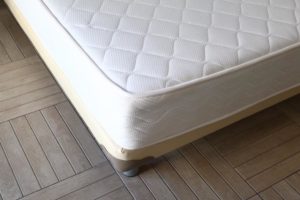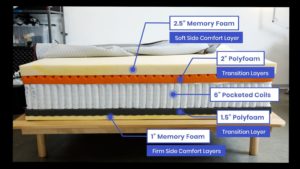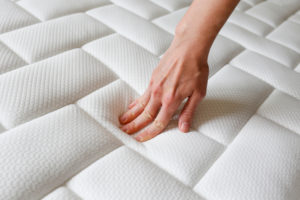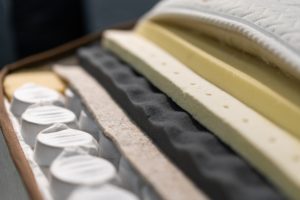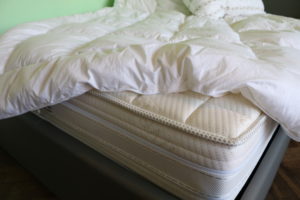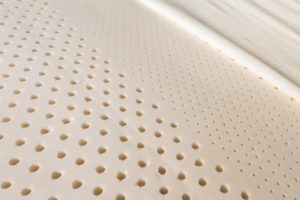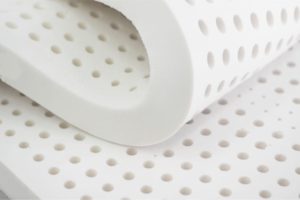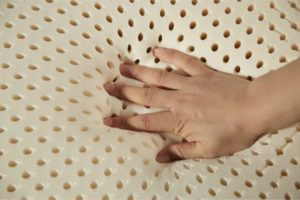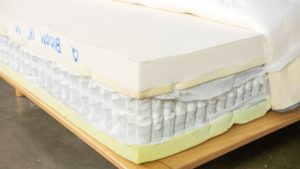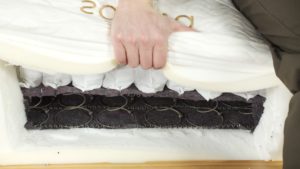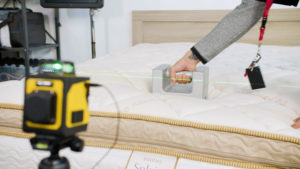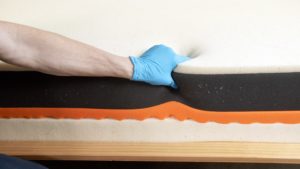What is the Difference Between a Pillow-Top and a Euro-Top?
When searching for the best mattress to meet your needs, you will be presented with dozens of terms that are likely foreign to you. One question we see frequently relates to a layer of additional padding that some manufacturers sew on to the top layer of their mattresses. The terms “pillow-top” and “Euro-top” refer to different styles of this plush comfort layer. But what is the difference between a pillow-top and a Euro-top?
Pillow-Top vs Euro-Top
Both of these terms refer to the plush comfort layer that’s placed on the very top layer of new mattresses. They are approximately 1 to 4 inches thick, and are usually relatively soft and comfortable. The primary goal of these additional padding layers is to provide better initial comfort and cushioning. Although the overall purpose is similar, pillow-tops and Euro-tops have distinct designs.
Let us help you find the perfect bed
Answer a few questions to find the right mattress for your unique needs
Pillow-top: This design consists of a single, gusseted layer made of either fiber or foam. As the name suggests, pillow-top mattresses often have a soft, “pillowy” feel to them. The layer is sewn onto the top of the mattress, with a small gap between it and the underlying comfort layer of the mattress. The result is a style with distinct layering, rather than the more uniform look of a Euro-top. Pillow-tops feel consistently plush and conforming throughout the surface of the mattress.
Euro-top: Euro-tops are also made of foam or fiber. However, this style typically utilizes denser, somewhat firmer materials. Euro-tops are sewn on flush with the edges of the mattress, rather than to the top of the mattress. Because of this, mattresses with Euro-tops appear more flat and neatly stacked, while pillow-tops appear more rounded. Euro-tops feel a bit more firm around the edges, with more cushioning towards the center of the bed.
Put simply, the difference between a pillow-top and a Euro-top is mainly in their choice of materials, plushness, and where they are sewn onto the mattress. Pillow-tops are softer, fluffier, and create a more “bowed” appearance to the top of the mattress (similar to the shape of a pillow). Euro-tops are more dense, and completely flush with the surface of the mattress.
Differences in Performance
There are a handful of other noteworthy differences between the two:
Durability
Generally speaking, Euro-tops are considered more durable than pillow-tops. The light and fluffy design of a pillow-top will eventually start to flatten out, resulting in an uneven sleep surface. Euro-tops generally last longer, but they may also display some sagging around the edges of the mattress.
Cost
Whether a mattress uses a pillow-top or a Euro-top is generally not a substantial contributor to its price-point. Both styles can be found on mattresses in all price ranges.
Feel
Pillow-tops offer a good balance of cushioning and firmness throughout the mattress surface. Euro-tops are firmer around the edges, and more cushy in the center. Other than this distinction, the two styles feel similar. In most cases, the underlying design and firmness of the mattress will have a much more noticeable effect on a bed’s feel, compared to the choice between Euro-top and pillow-top.
Edge Support
Euro-tops generally offer better edge support, as they are firmer around the outer perimeter of the mattress, and because they come flush with the edges of the bed. Conversely, pillow-tops offer a bit less edge support, due to their design that sits atop the mattress, rather than flush with it.
Overall, the differences between these two topper styles are relatively minor. When shopping for a new mattress, other factors will be much more important to consider.

Still have questions? Ask our community!
Join our Sleep Care Community — a trusted hub of sleep health professionals, product specialists, and people just like you. Whether you need expert sleep advice for your insomnia or you’re searching for the perfect mattress, we’ve got you covered. Get personalized guidance from the experts who know sleep best.










